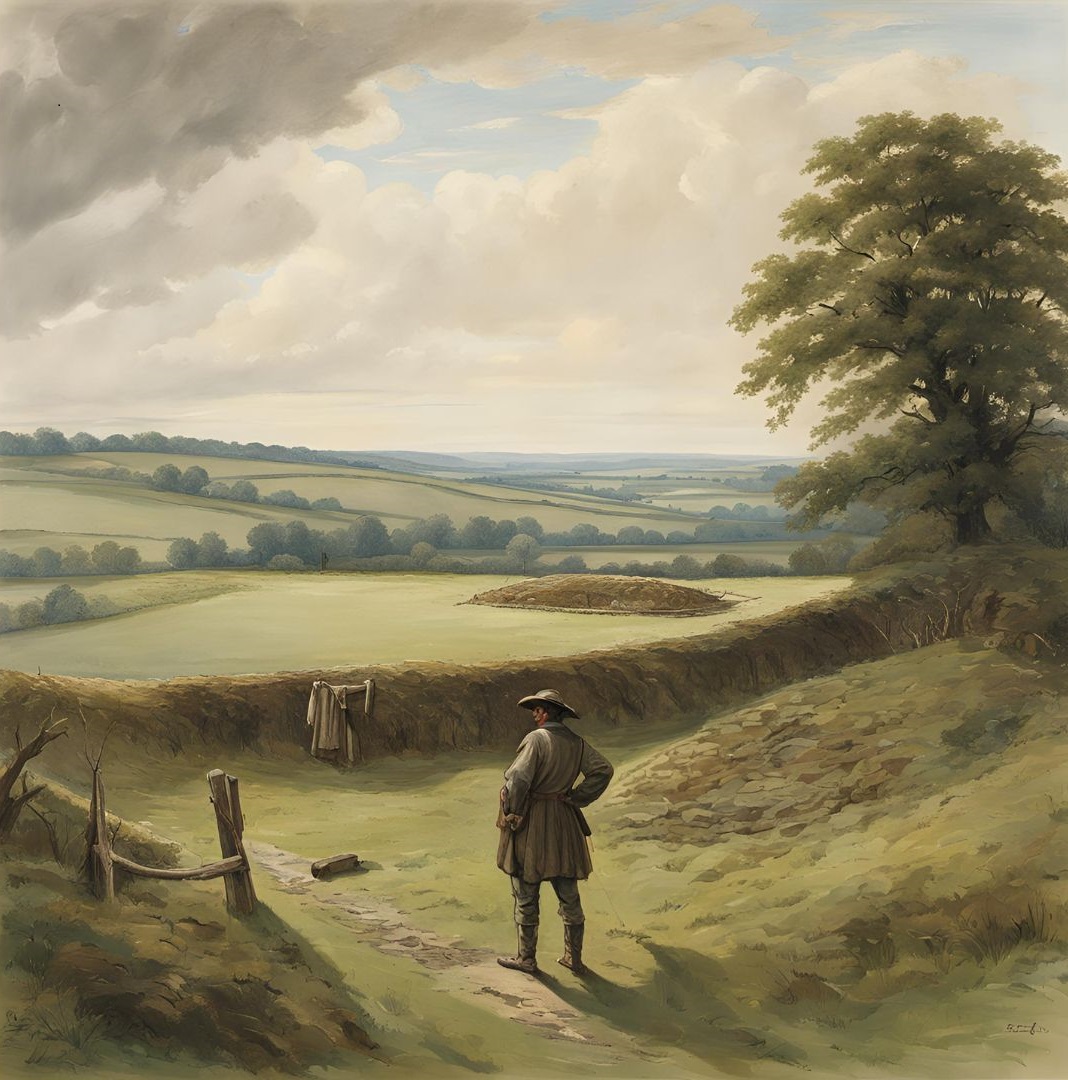What if I were to tell you that plagues, through time, were caused by comet and meteor strikes? You’d probably want to gently whisper about black rats, fleas and bacteria. And, suggest that ideas associating plagues with comets were the fanciful fears of prehistoric ancient peoples and medieval peasants. Yet, it appears that our ancestors’ observation skills are worth taking seriously. New understanding is coming to light from combining evidence written in tree rings, ice cores, ancient texts and myths, and astronomy. Why should we care? What does this mean for us today?
Where were all these dead black rats? As the people they depended on sickened and died, with buboes under their armpits, why did rats not die in equally alarming numbers, asks archaeologist, Barney Sloane? Even if we just consider this factor, it should jump-start us into asking questions, and those questions lead to far-reaching implications for the way that we view ‘infectious diseases’, epidemics and pandemics.
Where Were All the Rats?
I remember, years ago, as a fledgling archaeologist, I worked in the same office as a couple of zooarchaeologists. One of these people had a tray of medieval animal bones in front of them from a dig in the City of London. A new office block had already emerged over the site; I think, the Royal Mint. I asked, ‘What have you got there then?’ As they picked up bones to show me (and test my knowledge), they mentioned rat bones. I said something like, “Oh, those pesky rats, giving people the plague!“. They rolled their eyes and let me know that there are never any more rat bones than you would expect. That we never dig up any evidence of piles of dead rats, even at times associated with plague.
I swiftly forgot what I was told, but lately, I’m seeing the same message, and it has more meaning for me now. I had just started earning a living, and at this point I was probably looking at charred cereal grains from Roman corndriers, or wet, soggy seeds from medieval wells and dumps behind old riverside revetments in the City of London, hugging the north bank of the River Thames.
Plague, A Story Written in Tree Rings?
I also shared an office with two people (dendrochronologists) who looked at tree ring sequences from huge timbers hauled out of the ground around the big City. They would pull a large piece of wood from out of a freezer and clamp it onto a workbench outside. With a chainsaw, they would saw off a straight segment across the growth rings. Back indoors, a scanner would move slowly over the pattern of tree rings, communicating with a computer that measured and matched the rings with many other trees from the British Isles.

The main point was to date the wood, but now Professor Mike Baillie, and other researchers at Queen’s University, Belfast recognise periods of narrow tree rings that are of global significance. They occurred sporadically, on and off over thousands of years. Formed over a few years (maybe a decade), they coincide with episodes of plague that have swept across this planet. It’s looking like there’s a story in those tree rings. Like a fly trapped in aspic.
Plagues have always plagued us. We know of written evidence, that goes back 5000 years in China, of a plague that we now know was global, says Mike Baille. Their earliest written history really is that old. Baille shows how these characteristic narrow tree-ring events coincide with prehistoric plagues (prehistory in my part of the world; the British Isles). The plague recorded in Chinese history happened in 3192 BC. Others happened in 2345, 1628, 1159, and 207, all BC dates. Plagues continued in historic times too. In 540AD the Justinian plague swept over us. We’re most familiar with the Black Death (around 1348) and the Great Plague of London (from1665 – 1666).
The Sky, Comet Plague Connection
The medieval Black Death struck in 1348. But, I take you back into prehistory in the Middle Kingdom, and an Iron Age hillfort that we’ve visited in previous blog posts. You may want to read a Hillfort Recap. Here, eyes turned up to the sky in fear just before plagues emerged. Why?
Stories of Plague In the Middle Kingdom
I am Banba, Keeper of the Corn. I am also one of the Perimeter People who leave the busyness at the centre of the hillfort for a Lookout on the perimeter. Regularly, I watch the weather, for after long stretches of wet, or bitterly cold weather we risk failure of crops around the Kingdom below. But, this time, as a sharp frost numbs my fingers, I’m looking up at the night sky for signs of a fireball. It has a curved tail, and has had our elders murmuring in fear.
I wonder why, because I’ve never encountered one of these fireballs in the sky before. Yet, I know there are stories, passed down by our ancestors, of fearsome events that sometimes accompany these events in the sky.

A Talisman Tells of Plague
Among others, I heard this from Belanos the Pilgrim. He’s a traveller from our clan, recently returned from another Kingdom far south. It’s a land of white rock surrounded by deep blue sea. He brought us news of wise healers that reminded some of us of knowledge we’re losing. We’re forgetting our healing ways, now that the Orators, lay down new life rules with every sign of illness, and present new cures.
But, it was another story, and a figurine or talisman, that Belanos brought back from his travels that came to mind right now. Along with wise words about healing ways, he spoke of a company of drovers that he walked with. It was they who gifted him a talisman.
They were an ancient droving clan who always carried a talisman that protected them, and their herd. Ancestors had passed this down through generations. It had protected them when they escaped with their livestock from a devastating plague. This was a time when there was a fireball in the sky. It came down into the sea causing a great wave to sweep over the land, washing many people away.
Poisoned Air, Plagues and Comets
After the waters receded, a foul air travelled on the wind, and sank into hollows over settlements. It spread far and wide. With the arrival of poisoned air, people felt their lungs tighten. Their armpits swelled, their muscles ached, their throats burned and they spat blood. With fever and chills, they would empty their stomachs.
Travellers from other Kingdoms said that some of the symptoms were similar to the times when mountains erupted, spewing ash and deadly vapours into the sky; or when the earth split open. In some places, after a fireball hit the sea, the earth did, indeed, split open.
As the waters receded, there were dead fish and sea creatures everywhere, far inland. Belanos, on his travels, heard of ancient peoples in the far east who reported the same events happening when a fireball hit the earth in earlier times. These people of the east said there were two suns in the sky, or even ten. Floods overtopped mountains. Neither Belanos or the story-tellers had ever gone that far east, but they absorbed their stories, turning their amulets or talismans over in their hands.
These events, in times past. reached far and wide. Trees sickened and failed to thrive. When we harvested fallen, sickened trees for hearths and funeral pyres, we found that the last few years of growth produced thin growth rings.
Belanos Buries His Talisman
It is early Spring. Belanos rises from his night’s rest. He kicks the grass, hardened with frost, even now. The drovers, who he is travelling with, gather their animals while he stretches out stiff limbs. His joints ache these days after sleeping outdoors, even in sheltered spots. He knows this will be his last journey, and it is a pilgrimage. Following drovers across the Middle Kingdom, and onwards east, he intends to bury his talisman. He has no descendants. Even I, Banba, who became a good friend, died, not long ago. He must keep it safe.
Belanos has chosen an old burial site that sits around halfway across the country, on route eastwards towards the Northern Sea. He will bury it in a silted-up ditch around the old burial mound. He has left instructions hidden in his stories, hoping that a trustworthy ancestor will decipher them. Maybe they will recover the talisman?
Comet Gods Foretell Plagues and Disaster
It is many generations later that an ancestor does, indeed, chance upon this talisman. His name is Gwillam, a drover. He has driven over 200 head of livestock from west of the hillfort across country on a well-worn droving route. Its use stretches back through time – how long, we don’t know. He has rested for the night at the burial site that Belanos chose.

His eye takes in a low-lying circular mound, said to be the site where ancient people are buried. The cattle have disturbed a shallow depression around the mound. He notices something small and hard, and digs it out of the sandy soil. Curious, he bends down to investigate and finds a small, intricately carved stone figurine, partially obscured by dirt and debris. He carefully picks up the figurine and wipes away the grime, revealing the detailed features of a sheep or cow. Gwillam is intrigued by the craftsmanship and suspects the figurine is quite old and potentially valuable.
The figurine in his pocket plays on his mind, so he seeks out Owain Pritchard, an old drover friend who has knowledge of ancient artifacts. Owain takes a closer look at the figurine, noting the intricate details and the unusual stone it’s made from.
Flaming Fireballs, Noxious Mists and Plague
The old drover suggests that the figurine relates to the myth of Urien. He’s a Celtic comet god, whose fiery chariot raced across the night sky, casting an eerie glow upon the land below. The myth tells of a great fireball described as a “flaming sword” or “fiery dragon,” that plummeted from the heavens and struck the sea with a tremendous force, sending waves crashing upon the shores. As it did so, the sea boiled and churned. A noxious mist rose and drifted inland, carrying with it a terrible plague that swept through the countryside.
Over a thousand years after Belanos buried the talisman, its story will prove useful to Gwillam. It is the middle 1600s, and shortly after he travels back from the Northern Sea, the Great Plague strikes London. And what of these flaming swords and fiery dragons? Should Gwillam take any notice? Are they just fanciful stories of men who lived many centuries ago?
We come back to today to consider such a conundrum.
Myth or Truth About Plague?
The Trees Rings Speak
If we feel we should consign these myths of fireballs in the sky, and fiery dragons, to the history books, consider instead physical evidence we can see with our eyes. Those episodes of narrowed tree rings are real. Tree rings too are a useful, relatively exact, dating tool that shows that these episodes correspond to known episodes of plague. Why would that be? How come trees sickened at the same time that plagues raged?
If you want to know how we can use tree rings as a dating tool, read New Light on the Black Death, or watch a video: What is Dendrochronology (Tree Ring Dating) and Applications of Tree Ring Dating by Maria Baias.
Punching Holes in the Black Rat Story
Arch Criminal in the Dock – Rats
There are many problems with the idea that black rats caused the Black Death (and presumably, other plagues). The story goes that bacteria infecting rats, was carried to people by fleas biting infected rats, then us. But, though this idea is still prevalent, other researchers point out problems. We have the lack of evidence for rats dying off in great numbers, mentioned above.
Then, as pointed out by Mike Baille, rats couldn’t have travelled fast enough to match the speed of outbreaks of plague. Overland, Black Death was spreading at 1.5km a day. Even when we take into account rats boarding ships as stowaways, their ship-bourn army is never likely to have been large enough. People writing at the time of medieval plague rarely mentioned rats either. All these points suggest that rats have been ‘in the dock’ at court without good evidence. And, for a long time too.
Criminal 2 in the Dock – Fleas
Where are all the fleas? They can survive quite well in waterlogged silts in wells and cess pits. Yet, there are no archaeo-entomologists saying we have a ‘peak flea’ phase somewhere in the middle of the medieval period. Or, at any other time associated with plagues.
I have teased seeds and fruit pips out of cess pit assemblages, swimming in a soup of broken up beetles, fly pupae and other insect remains. When I’ve asked an insect specialist to identify these remains, they’ve never come back to me to say, ‘What a lot of fleas you have in this pit‘ (more than normal). My efforts are a small contribution to the evidence as a whole. But to me, it begs the question, “Should fleas be in the dock?”
Like rats, perhaps we don’t need more fleas, we just need them to be infected? Good point. But, the slow speed that rats could have travelled, and the time it would take for fleas to bite enough people, and a disease incubate, are still a problem.
Criminal 3 in the Dock – Yersinia pestis
This potential criminal is the bacteria Yersina pestis. It’s said to have infected rats, and been transmitted to people by fleas. And what of the bacteria? In my last post, I likened microbes to fingerprints at a crime scene. Just because they’re there, it doesn’t mean they belonged to the murderer. We’re now becoming more aware that we are in an ecosystem with bacteria and other microbes. The relationship is complex, and strangely enough, as Dawn Lester and David Parker point out, no one has successfully demonstrated that the germ causes the disease.
These issues should raise a few red flags, but old ideas die hard. Not only have researchers not been able to show a mechanism by which the microbe causes cells to sicken and die, but also they’ve not been able to convincingly mimic the transmission of illness from sick to healthy people. That’s after over a hundred years of countless experiments, says Daniel Roytas.
Germs have not only been in the courtroom dock, they’ve been convicted for a long time. Maybe we should consider them a ‘cold case’? Researchers have found the genetic signature of Yersinia pestis on the teeth of the medieval dead in plague pits around medieval Europe, even, at Hereford Cathedral in my local area. Details are to be found in a soon to be published book. Yet, the relationship between the bacteria and the diseased person are still unknown. It deserves attention, which it’s increasingly getting.
So, if we could grant rats and fleas a reprieve (and possibly bacteria), how do comets and meteors come into the story?
Do Myths Tell Some Truth?
Even before we get to myths, historic texts are intriguing. No one text gives us all the answers, but there are certainly many mentions of environmental catastrophe associated with plague. Often they mention corrupted air and evil noxious mists. During these events animals and people died en-mass. Did trees sicken too?
A German Historian Hints at Comet Plague Connection
J F C Hecker, a German historian, writing in 1833 had studied many ancient texts. He wrote about The Black Death of the Fourteenth Century. He says preceding the Black Death of 1348, environmental catastrophes built up from 1333. There were earthquakes, volcanoes, tremendous floods (possibly tsunamis) and more.
He says, of the year 1348, “On the island of Cyprus, the plague from the East had already broken out; when an earthquake shook the foundations of the island….. Before the earthquake, a pestiferous wind spread so poisonous an odour, that many, being overpowered by it, fell down suddenly and expired in dreadful agonies.* Of this part of the world he thought that there were few accurate observers (there was a deficiency in science).
He continues, “Yet, German accounts say expressly, that a thick, stinking mist advanced from the East, and spread itself over Italy;..” “In thousands of places chasms were formed, from whence arose noxious vapours….it was reported, that a fiery meteor, which descended on the earth far in the East, had destroyed everything within a circumference of more than a hundred leagues, infecting the air far and wide. The consequences of innumerable floods [tsunamis?] contributed to the same effect; vast river districts had been converted into swamps; foul vapours arose everywhere, increased by the odour of putrified locusts,….” Bold type and text in brackets are my emphasis.
Dragons Are Comets in Myths?
Is Hecker’s reading of ancient texts correct? Do the accounts of survivors of the Black Death reflect reality? If both are true, then we have much fodder for thought. There are numerous ancient descriptions like this. But when we consider myths, their story lifts the lid off a box.

I never used to be interested in myths. Stories of Medusa’s head writhing with snakes, instead of hair, never drew me. I preferred interrogation of the more tangible. For work, my job has been to see in detail; use pattern recognition to compare the shape, size and surface pattern of a seed and declare, ‘This tiny seed is Anthemis cotula – it is a common weed of cereals. It tells us this, this and this about the crop waste it was found with, in a Roman corndrier.‘
Yet, I’m starting to see that it is very likely that some myths describe a degree of reality. It’s often there as metaphor. Let’s start with descriptions that make sense without much trouble. There are ‘Comet Gods’ (or deities) in many cultures, as Mike Ballie illustrates. The Comet God, Lugh, is ‘as bright as the sun, coming up in the west, and having a long arm.‘
If we could recognise this as potentially a comet, then maybe we can grapple more easily with descriptions that sound fantastical in myths? Description of snakes, scorpions, toads and dragons in the sky, at the time of a plague, for instance. Maybe, they’re code for shapes in the sky that people saw, and described as fearsome animals?
Ice Cores, Comets, Meteors and Deadly Chemicals
Back to science. We might accept that strange animals in the sky (in myths), are comets and meteors from space. But, why did people die in such a dramatic fashion? If tree rings hint at environmental catastrophe (trees were covered in dust, they say), then ice cores add icing to the cake. Not very pleasant icing at that, since ammonia, sulphur and nitrate compounds are concentrated at points on the cores that correspond with major plague events (for ice core samples are datable). They’re compounds that are deadly in high levels.

But, imagine those stinking, noxious mists being made up of a smorgasbord of chemicals. They’ve dissipated through the atmosphere as a comet or meteor passes through, then risen up from the ocean on impact. Or, vapourised from the earth during earthquakes. The problem is that analysts of ice cores have cherry-picked their chemicals. After all, they’re often interested in the study of volcano eruptions, for instance. Not comet or meteor strikes.
Astronomers and Myths-Makers Agree?
Mike Baille suggests the British astronomy school could be called the ‘comet hazard’ school. If we pay attention to their work, we could name some components of the chemical smorgasbord. As a result, we may understand why comets were a hazard, independent of any physical effects of impact on earth. The British school recognise black comets which arrive with a poisonous trail from their black tarry coating made up of poly-aromatic hydrocarbons. They’re burnt-out, ‘outgased’ comets, leaving a trail of cosmic dust.
Worst of all, they are likely to have been invisible to sky-watchers of the past. And, they will visit us again. Astronomer, John Lewis author of ‘Rain of Iron and Ice‘ has recorded the regularity and patterns of previous impacts. Using computer analysis, he has proposed what the rate of impact should be in the future. It’s not a comforting thought, but times when the skies were more active with comets and meteors will come again. This is the stuff of horror and disaster movies.
Where Do We Go From Here?
Why frighten ourselves with such a prospect? Plans to evacuate to Mars aside, there are good reasons to take these new/old insights seriously. There are still many questions to answer. If the black rats, fleas and bacteria hypothesis finally crumbles, it is fundamentally important for the way we see other diseases. Many are thought to be animal-transmitted, or zoonotic diseases, but are they? We may be similarly mistaken when we put other so-called disease-carrying animals in the courtroom dock. And, there’s the germs.
As I discussed in my last blog post, the concept of Contagion is increasingly back under microscope. Researchers are busy knocking a few holes in Germ theory, and I believe they have good points. Sometimes, we get stuck on one way of looking at a big issue for many reasons.
Researchers Need to Have Tea Parties
One reason is that researchers tend to work in silos, and don’t understand another knowledge area, not the least because they don’t communicate. We need more cross-disciplinary researchers. Mike Baillie gives us an example of where scientists, using precisely dated evidence, can’t quite deal with mythology: “The dilemma of course is that while the tree rings and the ice cores are purely scientific endeavours, almost no one in the modern science (or indeed art or history) community is geared up to cope with mythology….Mythology is, to all intents and purposes, not allowable in scientific or historic discussion.”
Researchers need to have some tea parties. We need a culture of chewing the cud over a pot of tea and some cake. What could be blocking this?
If mythology is not allowable in scientific or historic discussion, then thinking differently seems to be increasingly not allowable. If any issue is a hot potato, then it’s likely that big business and politics, combined, control research money, and the media. As a result, we, everyday people are left in the dark. Anyone who shares controversial ideas (professional or amateur) is accused of ‘misinformation’ or ‘disinformation’ and effectively beaten with a stick.
What could I suggest, other than learn to parry. Keep questioning. Keep sharing.
Disclaimer: These are my personal views only, and not necessarily the views of my profession (archaeology). New thinking, even if it’s based on old thinking, takes time to be ascimilated. Only time will tell how the narrative on plagues will change.
If you want to find out more about the real archaeological site where Belanos buried his talisman (fictional event), read:


It’s hard to find well-informed people about this subject, however, you sound like you know what you’re talking
about! Thanks